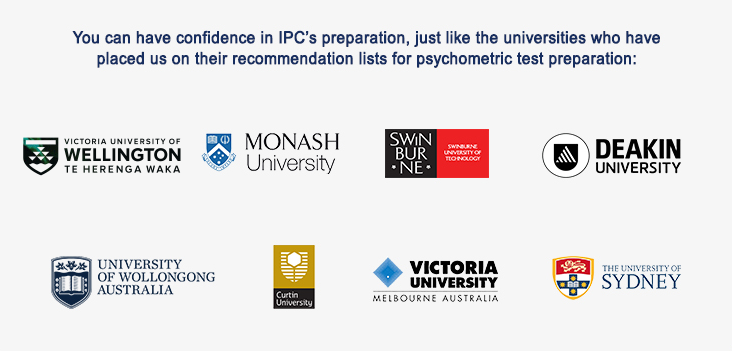Tasmania Fire Service (TFS) Cognitive and Safety tests professional preparation 2025
Preparing for Tasmenia Fire Service (TFS) 2025
If you are applying to join Tasminia Fire Service (TFS) , you will be asked to complete a variety of tests as part of your entrance exam.
In the screening phase, you will be asked to complete a Cognify test which is a set of 6 Cognitvie mini tests focusing on: :
- Numerical reasoning
- Verbal Reasoning
- Abstract Reasoning
In additional you will be asked to complete a timed Safety test.
1. Tasmania Fire Service's CognifyTest
Tasmania Fire Servide is using a Cognify test to assess candidates' cognitive abilities.
What is the Cognify Test?
The Cognify Test is a game based type of psychometric testing. Each test is timed and looks like a basic video game.
The Cognify test moves away from the question/answer based style of standard psychometric tests. Instead, it uses game based tests to measure your abstract, verbal and numerical reasoning. This means that you no longer have a series of questions on the screen andno calculator or paper pad is necessary.
You are expected to follow the instructions carefully as you start each test or game.
The theory behind the Cognify Test
The Cognify Test model is based on the Cattell-Horn-Carroll theory of the structure of human cognitive abilities.
The theory combines concepts like fluid and crystallised intelligence and the three-stratum model of intelligence. It has aided the evolution of the psychometric approach in understanding human cognitive characteristics by employing advanced statistical techniques like factor analysis.
What to expect in the Cognify Test
The Cognify Test measures three components about your cognitive abilities:
- 1. Problem Solving:
In problem solving the test assesses your ability to quickly learn, adapt and solve problems.
This measures your ‘fluid intelligence:’ the ability to see a problem for the first time and find out how to solve it without any prior knowledge.
- 2. Numerical Reasoning:
In numerical reasoning the test assesses your ability to understand numerical concepts, work with numbers and use formulas to solve problems.
- 3. Verbal Knowledge
In verbal knowledge the test measures your knowledge of the English language – focusing on spelling, grammar and identification of errors in text.
Timer
Each of the tests in the Cognify set of games is timed at 5 minutes.
What to expect in Problem Solving tests:
The Cognify Test has three mini tests measuring your problem solving skills:
- Gridlock
- Resemble
- Short Cuts
The ‘Gridlock’ test
In this mini test you need to solve a number of consecutive grid based puzzle games as quickly as you can.
There is generally a central grid and you have to fit the given figures in (rotate, drag and drop) to complete the grid.
The ‘Resemble’ test
In this mini test you will be presented with a figure in the left section and generally a simple ‘angle of rotation’ value given beneath it, for example: 180o or 90o.
All you have to do is mentally rotate the figure on the left by the angle indicated and recreate the resultant figure in a central grid on the right.
The ‘Short Cuts’ test
In this mini test you are asked to move a particular ball and move it to a destination indicated by stars. You are supposed to move the target ball to the destination using the fewest moves as quickly as possible.
What to expect in the Numerical ability tests:
The Cognify Test has two mini tests measuring your numerical ability:
- Numbubbles
- Tally Up
What to expect in the ‘Numbubbles’ test
This mini test displays a target number and a number of bubbles with simple equations.
Your task is to identify the bubbles containing an answer equal to the target value displayed.
What to expect in the ‘Tally Up’ test
This mini test displays two sections with numbers (appearing as tokens) in each frame. Your task is to decide which frame has a higher value of numbers (tokens) or both frames might be of equal value.
What to Expect in Verbal knowledge tests:
In the Cognify Test you will have two mini tests measuring your verbal knowledge:
- Proof It
- Pop Up
What to expect in Proof It test
In this mini test you are presented with series of texts that include grammatical errors such as punctuation errors, missing words, misspelled words and grammatical errors.
Your task is to identify all grammatical errors in each text in 1 minute.
2. Tasmania Fire Servie's Safety test
What is the Safety test?
What are Work Safety tests?
Work safety tests typically include a list of statements (similar to all personality tests). Your task is to state the extent to which you agree or disagree with each statement.
Important facts about work safety tests:
- Work safety tests are not timed. Therefore, you can take as long as you want to complete the test.
- There are many companies that offer work safety tests, and all have a similar structure.
- Contrary to other personality tests, work safety tests are fairly short and only measure specific personality traits. For example, Revelian’s work safety test has 54 questions, while Hogan’s has 200.
What Work Safety tests measure?
There are several personality characteristics or traits that Work Safety tests try to measure. While you may find that different tests use varied names for these scales, most focus on measuring five:
Scale 1 – Risk Avoidance, or Risk Averse, or Cautious
This scale measures whether you are either a cautious person (who doesn’t like to take risks) or whether you are someone who enjoys the thrill of taking risks. The idea behind this scale is that people who enjoy taking risks to achieve good outcomes in the work place are more likely to be involved in accidents, and are less likely to avoid danger in the work place. It is important to note that there is a difference between taking ‘uncalculated’ and ‘calculated’ risks. A negative result in this scale is that you like taking uncalculated risks in the work place.
Scale 2 – Safety and Personal Accountability/Responsibility
This scale measures whether you are someone who tends to take personal responsibility for your own safety. A person who takes personal responsibility is likely to believe that most, if not all, accidents can be prevented by his or her own actions. This person believes that factors like luck, the management, work colleagues, or any other external factor (i.e. one that the person doesn’t control) have a very minor influence on accidents in the work place. It is all to do with you and your actions.
Scale 3 – Managing Stress, Emotional Resilience, or Being Strong
This scale measures whether you are capable of effectively managing stress in the work place. The idea is that, under pressure, some people may panic and make mistakes that then cause accidents. The focus of this scale is in measuring how well you cope with stress and pressure. People who are capable of controlling their own emotions and cope with stress are less likely to be involved in accidents at the work place.
Scale 4 – Aggressive or Violent Behaviour
This scale measures whether you are likely to lose your temper easily and respond to situations at work in an aggressive or violent manner. The idea behind this scale is those who lose their temper easily are likely to make more mistakes, and this may lead to more accidents in the work place. People who are calm and have coping styles that assist them to overcome frustration and anger are less likely to make mistakes or be involved in accidents in the work place.
Scale 5 – Compliance and Obedience
This scale measures whether you are willing to follow rules and procedures. The idea behind this scale is to measure whether you are likely to bend or ignore some of the rules when you want to achieve a good result in the work place. Those who are more willing to bend the rules (or approve of the use of drugs or alcohol in the work place) are more likely to make mistakes and be involved in accidents in the work place.
Let's review the following example Work Safety test question:
If a person is insulted then he is entitled to be angry
- Strongly disagree
- Disagree
- Neutral
- Agree
- Strongly agree
This safety test question is designed to measure your ability to manage your anger and frustration in the work place. If you were to choose “agree” to this statement, then this would indicate that you are likely to approve of aggressive behaviour in the work place, which is likely to lead to accidents.
How IPC helps you to prepare for Tsmania Fire Service (TFS) Cognify and Safety tests
The Institute of Psychometric Coaching (IPC) has developed a variety of tailored preparations to ensure you are ready for your Cognify Test. Our professionals have analysed strategies and techniques and developed a full range of countermeasures. Our preparations include:
1. Online specific TFS Cognify and Safety practice tests
- Online practice mini tests – tailor made for Cognfiy and Emotify tests
- A large pool of timed practice cognitive tests online such as Resemble, Tully Up, Numbubbles, Pop-Up and Proof It and Safety test.
- Step by step solutions at the end of each mini test
- Test scores in comparison to others
- Feedback on how to improve
Benefits include:
- Based on real Cognify and Safety test questions
- Timer mimics the pressure of taking the real test
- Immediate access
2. Face-to-face tutoring for your Cognify and Safety tests with Tasmania Fire Service
Experience gold standard service with IPC’s personal tutoring.
Our personalised service includes:
- One-on-one tutoring delivered by experienced Psychometricians.
- Face to face sessions (in our Melbourne and Sydney offices) or via Skype live
- In depth analysis of your cognitive weaknesses to focus the session and maximise your scores
- Working together to ensure you reach maximum potential and capabilities in your Cognify and Personality Tests







